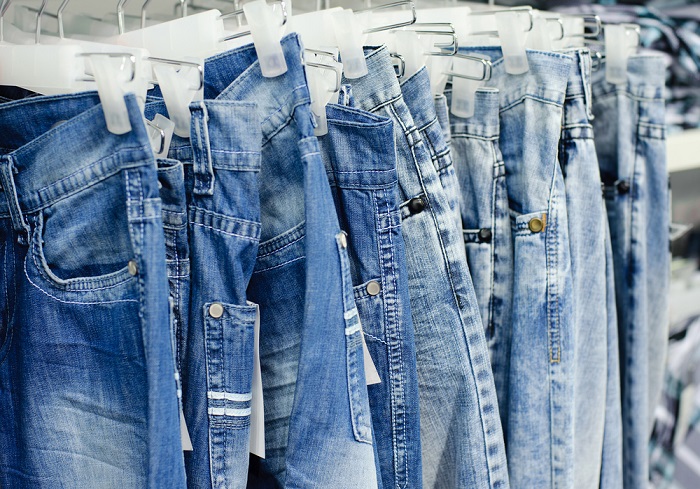Denim’s Demise: How Athletic Wear Is Impacting The Jean Business

Millennials just aren’t wearing jeans any longer.
You might notice the trend in the streets, as more and more millennials are switching up the look of traditional denim jeans for stylish (and far more comfortable) sweatpants or yoga pants from Lululemon, Nike or Under Armour.
And it’s a trend that is definitely starting to manifest itself on retail shelves as well, as a recent study by Synchrony Financial found that 80 percent of those surveyed said that they have worn “athleisure” clothing — defined as “casual” clothing, like yoga pants, sweatpants and hoodies — on “occasions other than working out,” while 69 percent said they wear athleisure clothing, as opposed to jeans, at least once a week.
“Apparel retailers should consider investing in the new trend of customers wearing yoga pants to the studio and beyond,” according to the Synchrony study. “Today’s consumer values comfort, along with movement and style.”
A Morgan Stanley study from Oct. 2015 found that sales of footwear and sports apparel have grown by 42 percent over the past seven years to amount to a $270 billion industry.
“The sports we play (or watch) can shape what we wear — and buy. A focus on fitness and healthy living has translated in more active lifestyles, especially among youth,” according to the Morgan Stanley study. “In North America, for example, sports participation among high-schoolers overall has jumped from 25 percent to more than 35 percent over the past 35 years, led by a near doubling among girls, from 17 percent to 32 percent over that period. Studies by U.S. professional sports leagues show that consumers’ interest in sports is highly influenced by whether they played when younger.”
And the industry is poised for even bigger growth in the years ahead, fueled by many younger consumers being so heavily invested in advancing their careers and earning more income, while still wanting to maintain an active lifestyle. Emerging markets, like China, where the health and fitness trend is just beginning to take off, are also expected to fuel growth in the coming years. Morgan Stanley estimates that the industry could see about 30 percent growth, or $83 billion in new sales, by 2020.
“We think the market will be surprised to learn how broad-based the cultural factors driving athletic apparel and footwear sales are,” Jay Sole, who covers branded footwear and apparel for Morgan Stanley, said in a statement. “U.S. investors may not grasp how big the China and emerging market opportunities are, and Asian investors may be similarly surprised at U.S. strength.”
But that growth has to come at the expense of something, and it seems that traditional denim jeans are bearing the brunt of the rise in athleisure’s popularity, as it’s much more acceptable nowadays to carry out errands or show up to the office wearing brightly colored sneakers and designer exercise gear.
“The sportswear industry designs clothes, shoes and gear that are high-performance, comfortable and fashionable. You don’t have to be a track star to prefer the comfort of running shoes; if you’re into yoga, chances are you already appreciate the look and feel of form-fitting stretchwear,” according to Morgan Stanley. “The upgrade cycle of new designs and improved materials — a page torn from tech — also keeps consumers engaged and coming back for more.”
Sales of athleisure now make up 28 percent of all apparel purchases among teens, up from 6 percent in 2008. This type of clothing is now more popular and selling better than denim among upper-income teenage females, with athleisure sales amounting to 15.6 percent of all sales among teenage females in the spring of 2015 compared to just 9.1 percent for denim, according to a survey on teen shopping habits by Piper Jaffray.
Even Levi’s, probably the world’s best-known jeans company, has started feeling the heat, with Bloomberg noting that the company has seen its sales dip by several billion over the past couple of years, while the company’s stock has dropped from a high of $752 a share on June 5 of last year to trading at more than half that price today (Levi’s stock was trading around $322 a share on Aug. 9).
“We’re scrambling,” Levi’s CEO Chip Bergh told Bloomberg in a piece about the company’s declining sales in July 2015. “I mean, there is a big difference between the product that we’ve got on the floor today and what the consumer is looking for. And we just flat-out missed it.”